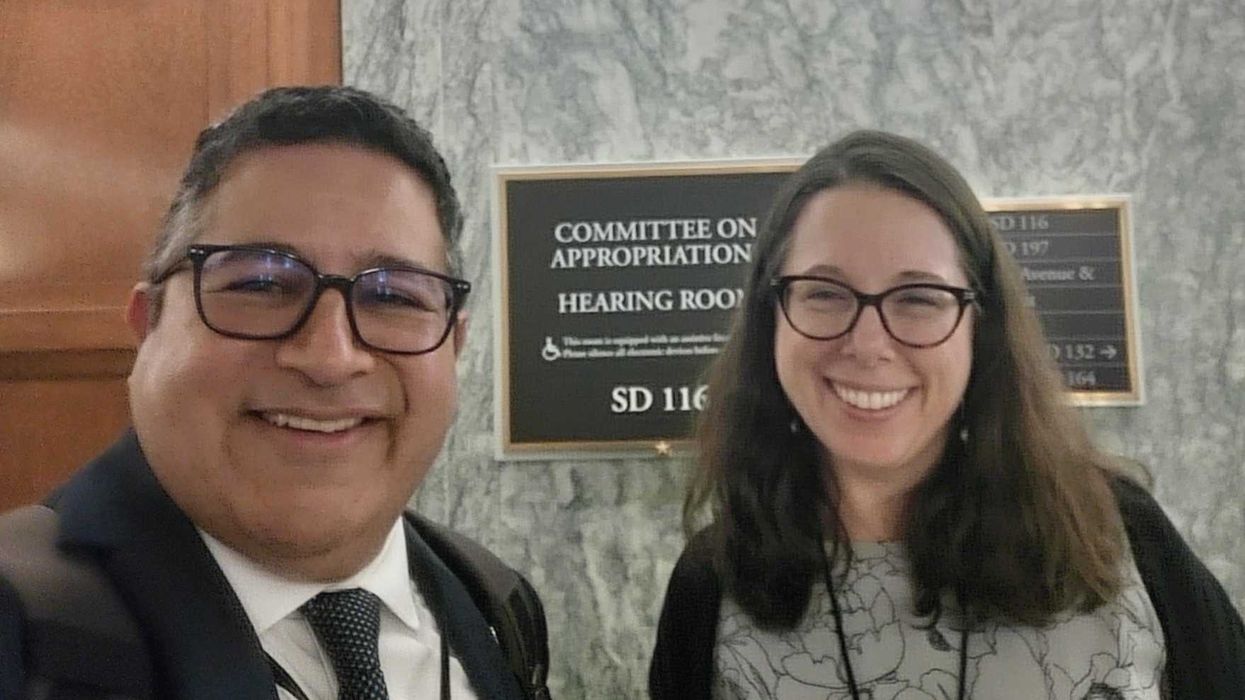Social entrepreneurs are people who launch ventures aimed at promoting positive change in their community and in the world. I am such a person. In 1982, I founded a nonprofit organization called Search for Common Ground (informally known as “Search”). My bottom line was not financial gain but making the world a better place.
My credentials as a social entrepreneur grew out of my hands-on involvement in building Search from zero into the world’s largest nonprofit group involved in peacebuilding. My partner and closest collaborator was—and is—my wife, Susan Collin Marks. By the time we stepped down from Search’s leadership in 2014, we had a deeply committed staff of 600 employees working out of offices in 35 countries. In 2018, Search was nominated for the Nobel Peace Prize.
There are two kinds of social entrepreneurs: those, like us, who work in the nonprofit sector, and those who start social enterprises whose goal is both to promote the public good while supporting their work by making a modest profit.
As a social entrepreneur, I was self-taught, neither a theoretician nor a scholar. Over the years, I developed a set of eleven working principles that have become my modus operandi and provide the basic framework for my new book, “From Vision to Action: Remaking the World Through Social Entrepreneurship," from which this series of three articles is adapted. While I applied these principles in nonprofit work, they are also applicable to social enterprises—and to life, in general.
PART ONE
PRINCIPLE #1: START FROM VISION. Social entrepreneurs need to have a clear vision, and everything they do should be consistent with that vision—or at least not inconsistent with it. A vision may appear in a flash or evolve over many years. My vision was to shift how the world deals with conflict—away from adversarial, win-lose approaches toward non-adversarial, win-win problem-solving.
During the Cold War, my vision included ending the adversarial relationship between the United States and the Soviet Union. Like so many people, I was terrified by the prospect of nuclear war. If something profound were not done, I feared the superpowers would blow up the planet. Preventing nuclear war—in essence, saving the world—provided me with huge motivation. It still does.
I believed the best way to reduce the threat was to move the superpowers from a state of confrontation to one of cooperation. Consequently, my colleagues and I played a key role in facilitating cooperation between the U.S. and the Soviet Union in countering terrorism. To that end, we even facilitated collaboration between the CIA and the KGB.
This photo appeared on the back cover of the book I edited with Igor Beliaev, called Common Ground on Terrorism and published by W.W. Norton. From left: Igor Beliaev, Political Observer, Literaturnaya Gazeta; Feodor Sherbak. former First Deputy Director, Internal Security Directorate, KGB; William Colby, former Director, CIA; Ray Cline, former Deputy Director, CIA; Natalie Latter, interpreter; John Marks, President, Search for Common Ground; Valentin Zvezdenkov, former Director of Counterterrorism, KGB; Oleg Proudkov, Foreign Editor, Literaturnaya Gazeta
PRINCIPLE #2: BE AN APPLIED VISIONARY. Social entrepreneurs should not be pure visionaries unless they intend to start a new religion or write a philosophy textbook. Rather, they need to be visionary leaders who produce tangible results in the real world. Although they may have lofty intentions, they have no choice but to move ahead one step at a time and be incrementally transformational. If they go for overwhelming, unified solutions, they are likely to fail. However, if some part of their overall goal is reachable, they should probably start there. I call this a salami-slicing approach. A small victory is almost always more useful than a large failure. And their timing needs to be right. If they move too quickly or are too far ahead of the curve, they will be viewed as hopeless dreamers. However, if they are too slow in reacting, there may be little reason for them to proceed. I have found that being six months to a year ahead of conventional wisdom is a good position to be in.
For example, in 1993-1994, before official peace talks had begun between Jordan and Israel, we at Search sponsored back-channel meetings between former generals from the two countries. Together, they worked out unofficial understandings on key issues. After each session, the results were promptly sent to the Prime Minister of Israel and the King of Jordan. Our unofficial talks demonstrated that agreements could serve the interests of both parties, and many of the formulations made by our generals became part of the eventual Israeli-Jordanian peace treaty.
PRINCIPLE #3: “ON S’ENGAGE ET PUIS ON VOIT.” This is a quote from Napoleon Bonaparte – someone not generally considered a peacemaker. A non-literal translation is: “One becomes engaged in an activity, and then one sees new possibilities.” Napoleon was a soldier, and he believed that the best way to understand enemy defenses was to attack and then observe the reaction. As a peace-loving civilian, I only apply this Napoleonic logic metaphorically. I don’t go around beating up opponents to see how they defend themselves. However, the lesson for social entrepreneurs is that once engaged in an activity, they will likely detect opportunities they would not have seen otherwise.
I found that excessive planning was often a barrier to moving forward. As boxing champion Mike Tyson once said, “Everyone has a plan until they’ve been punched in the mouth.” The Soviets learned this the hard way with their five-year plans.
Allen Grossman, my oldest friend and a former chair of Search’s board, topped off a successful career in both the nonprofit and for-profit sectors with twenty years as a professor at Harvard Business School. According to Allen, there are two principal management styles. The first is management by rule. It requires employees of an organization to follow well-defined procedures. The second is adaptive management. It requires problem-solving and decision-making in response to exceptions, new information, and changing circumstances.
All organizations must have rules, but I found that social entrepreneurs are usually much more interested in being adaptive than in following regulations. The path forward most often emerges, not from long-term, deliberative processes, but from unfolding events.
The remaining eight principles of social entrepreneurship will be described in two additional excerpts from the book, “From Vision to Action: Remaking the World Through Social Entrepreneurship.”
In addition to founding and heading Search for Common Ground, John Marks is a NY Times best-selling and award-winning author, who most recently started the Pro Bono Litigation Corps in partnership with Gary DiBianco under the auspices of Lawyers for Good Government.


















